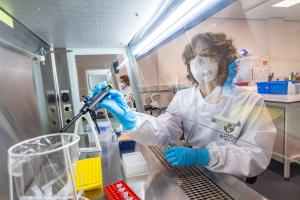A ‘Matter Arising’ paper published in Nature today refutes the findings of a paper by Sala et al on the amount of CO2 released from the seabed by bottom trawling. The paper made significant headlines around the world on release in 2021, as it equated the carbon released by bottom trawling to be of a similar magnitude to the CO2 created by the global airline industry.
In their paper quantifying the carbon benefits of ending bottom trawling, Prof Jan Hiddink of Bangor University’s world-renowned School of Ocean Science and others, explain that the methodology used in the original paper was far too simplistic and vastly overestimates carbon emissions. In calculating the CO2 released by bottom trawling, the paper modelled the amount of carbon that would be disturbed, and they assumed that most of this would be converted into CO2. However, the majority of this organic carbon on the seabed would decompose and be released as CO2 regardless of whether it is disturbed by bottom trawling. Hiddink et al. therefore show that only a very small fraction of seabed carbon reacts to trawling disturbance.
“The carbon benefits of ending bottom trawling have been massively overstated in this paper” Hiddink explains. “While bottom trawling undoubtedly disrupts the natural carbon fluxes and disturbs the bottom-dwelling sea life, seabed carbon flows are highly complex and need further research.
Questioning whether the estimates in the paper were realistic, Hiddink reviewed 49 other studies on the measured CO2 differences before and after trawling- and the findings were varied, with 60% of the papers finding no significant effect, 29% finding lower organic carbon and 10 % finding more. If the findings of Sala et al were correct, surely these massive and significant numbers would be reflected in these studies?
Hiddink argues that the Sala paper has confounded the fresh carbon in the top layer, which would be quickly released by natural processes in any case, with the much less reactive carbon stored in the deeper sediment. As the surface layer carbon will be converted to CO2 in any case, assuming it is affected by trawling makes no sense, and massively inflates the estimated CO2 emissions.
Hiddink suggests a figure that is a factor 100 to 1000 times lower than calculated in the Sala paper for the amount of carbon released by trawling would be more appropriate.
“We don’t know enough about what bottom trawling does to seabed carbon stores to be able to make robust global estimates about the effects of bottom trawling.
“Using these figures is worrying, as many governments and others are proposing banning bottom trawling and using the ‘carbon credits’ to offset other activities, but if the carbon emissions are overestimated by several orders of magnitude, we risk increasing overall CO2 emissions while reducing the global food supply.”

Paper refutes assertion that effects of bottom trawling on blue carbon can be compared to that of global air travel
Moves to use carbon credits accrued by banning trawling could be directing efforts away from more effective methods.



